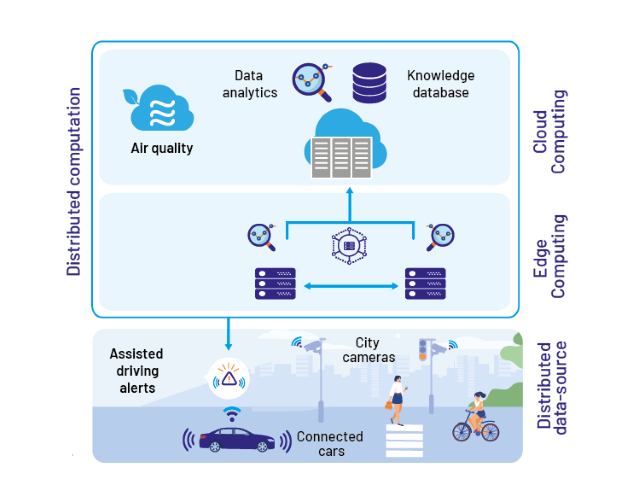Smarter cities in real time: The novel CLASS software architecture
To do so, the CLASS software architecture facilitates the way programmers develop, deploy and execute complex big data-analytics over a heterogeneous edge and cloud ecosystem aiming at collecting, storing, analysing and processing vast amounts of data, in order to transform it into valuable knowledge for the public sector, private companies and citizens. Current trends towards the use of big data technologies in the context of smart cities suggest the need of novel software ecosystems upon which advanced mobility functionalities can be developed. “Can you imagine a city where data is shared between the city and cars to allow for smart traffic management and advanced driver assistance systems? This is the contribution of CLASS project that facilitates development of complex big-data analytics capable of enhancing the interaction between vehicles and citizens in urban areas in real-time”, says Eduardo Quiñones, CLASS coordinator and senior researcher at the Barcelona Supercomputing Center (BSC). The innovative approach, adopted by CLASS, integrates technologies from various computing domains, including IoT, edge, cloud and high-performance computing, combined with mobile communications to enable sustainable, efficient and safe mobility applications for future smart cities. As a first step, the CLASS architecture collects data from street cameras and smart and connected vehicles, able to report in real-time their position and objects detected around the area. By applying advanced data analytics on the collected information, the routes of nearby vehicles and pedestrians can be predicted. The smart vehicles can then be warned and provide the drivers with valuable assistance, avoiding possible collisions. Moreover, the same data on the moving vehicles is used to estimate car pollution emissions, increasing the overall quality of life of citizens. The key novelty of CLASS lays in enabling the development, deployment and efficient execution of the complex data analytics applications in a way transparent to the underlying infrastructure, facilitating interoperability, portability, and scalability. To meet the real-time constraints of the assisted driving application, CLASS seamlessly distributes the computation across the compute continuum, spanning from edge to the cloud, supporting concurrency and scaling of the cloud resources if needed. “In the real-life urban laboratory of the Modena Automotive Smart Area (MASA), CLASS has tested out the most innovative smart-city technologies, paving the way towards a truly responsive urban area which improves the quality of life for all citizens”, said Luca Chiantore, Manager of the department of smart city, demographic services and participation of the Modena City Council. The advanced analytics on the data collected from a network of interconnected cameras located in the MASA and from two fully sensorised Maserati cars have demonstrated the CLASS innovative potential in traffic management and advanced driver-assistance systems. As Mara Tonietti, Innovation Specialist at Maserati, pointed out, “CLASS has combined the proud Italian tradition of high-end cars with the needs of modern smart cities, enhancing the capabilities of connected vehicles”. Don’t miss our final event on Wednesday 30 June at 10:00-13:00 CEST, where we showcase this exciting project. Register for free: https://bit.ly/3gH2ZuL



